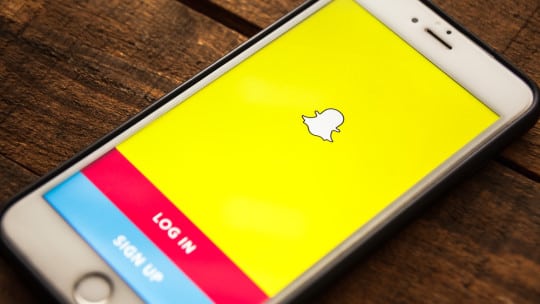

Snapchat is the shiny, relatively new social media lure. Many brands are nervous to take a bite because it’s not the most intuitive platform for metrics. Some communicators feel that if you can’t measure it as you do with Twitter, Facebook and Instagram, you shouldn’t focus on it.
The good news is that you can measure it—I measure it for the WeAreCisco Snapchat account (wearecisco). If your audience members are on Snapchat and you want to reach them where they are, you shouldn’t be scared off by the differences of the channel, but instead embrace them as a part of your overall social media effort.
You just have to understand Snapchat a bit better and know that with Snapchat, for the most part, you’re targeting a very specific audience, largely Gen Z and millennials.
This situation could change as older demos discover snapping.
Snapchat Is Different
Snapchat couldn’t care less about what you’re comfortable with around metrics. It’s different.
•There are no native analytics.
•Follower counts? Nope, engagement counts.
•Metrics disappear when the snaps disappear. Unless you invest in a metrics tool.
But in many ways Snapchat is the same as other social media platforms. If you’ve been following social media best practices on other channels, you might recognize and appreciate Snapchat’s focus on engagement. There’s no follower count, but engagement counts on the platform.
For me in social media as a whole, it’s always been about quality over quantity. Snapchat just puts more focus there.
Extra Challenges
One of the reasons users like Snapchat is that content disappears. It’s also raw and authentic, which is why some marketers are concerned.
• There are no clickable links out. Click-through rates won’t be the best measurement here. If you use a URL address, you’ll want to make it as easy as you can to type in (think vanity URL) and create a way to track it when someone tags that URL.
• There are no hashtags to monitor. Snapchat is anti-hashtag. It won’t even allow them in your paid geofilters.
• There are no likes. No shares. No retweets. No faves.

Measurement Options
With Snapchat, you can find metrics manually or save yourself from headaches and use a limited selection of paid tools.
Manual Metrics
Pros: It’s free, and if you can do a modicum of math it’s not hard.
Cons: You spend a lot of time pulling numbers, adding up stuff, keeping excel spreadsheets, etc. The biggest con is that it’s all about timing. If a snap disappears after 24 hours, you have to set a reminder 23 hours and 50 minutes after each snap to go and check the numbers the closest you can get without going over.
Tool Metrics
Cons: It costs money. But what is your time worth to your company?
Pros:The time restriction is gone—you can check the metrics whenever you want. Everything in the tool presented so nicely that you can pop in for 10 seconds, scan and get out.
Charts and graphs are done for you, too. Snapchat makes it hard for these tools as well, so in 2017, we’ll see if Snapchat joins the metrics club.
What Can/Should You Measure?
1. Total unique views. Look at your first snap of the day. See the eyeball and the number? That’s your unique views. Don’t add up all the views on all your snaps. Those aren’t unique views. Generally speaking, you’re not starting a snap story in the middle.
2. Total completions. Look at your last snap of the day. Eyeball. Numbers. That’s how many people viewed the whole story.
3. Completion Rate. This is my favorite engagement metric. This is a percentage of how many people started and completed your story. Take your total completions, divide it by total unique views (last snap views/first snap views) times 100 to get a percentage rate. Higher is better, lower means reevaluate your content.
4. Screenshots. This is the one engagement metric where someone takes an action on your content. Look for the green screenshot icon and add up all the numbers. Here’s the kicker: If you didn’t ask for screenshots, you don’t want to freak out if you don’t get any, because it’s all about…
Your Goals
If you’re not thinking about specific goals for any of your social media channels, you should reevaluate.
Without clear goals, you will never be able to show clear success.
1. Who is your audience? If you’re looking for retirement age, Snapchat ain’t for you.
2. What do you want your audience to do? For example, if you want them to screenshot, and you ask for screenshots, measure screenshots.
3. What are your expectations?Are you trying to sell a product? Grow awareness? You look at different metrics for those goals on other platforms, why not social?
Now, get out there and get measuring.
NOTE: This content appeared originally in PR News, June 26, 2017. For subscription information, please visit: https://www.prnewsonline.com/about/info
CONTACT: [email protected]
